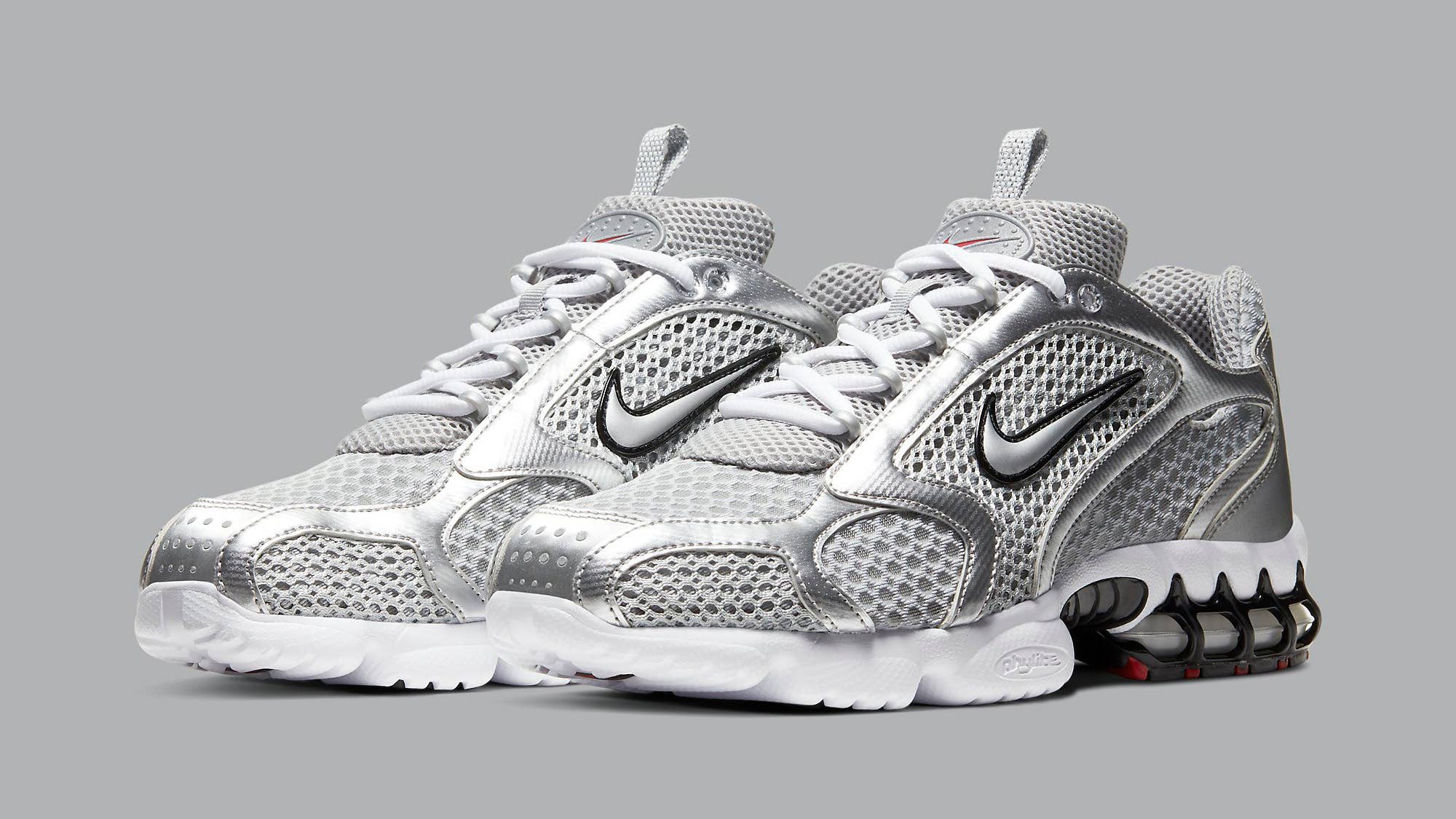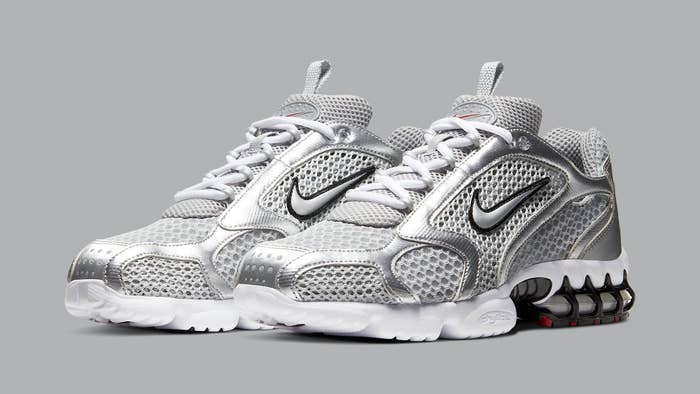
Nobody wants people to see their sweaty feet as they run. That's an important design note. Nobody wants their sneakers to fall apart underneath them, either. Another piece of footwear feedback to jot down. What runners—those in marathons, specifically—might want is a shoe that can drain out any water that could splash footward after they douse themselves at a mid-race pit stop. Use that insight, too.
These were all part of the path to production for the Nike Air Zoom Spiridon Cage 2, a specialty runner originally intended for the Japanese market that first released in 2003. The sneaker, designed by sportswear industry journeyman Steven Smith, has returned in 2020. (Smith's current job title is design director at Yeezy, where he works on Kanye West's latest sneakers.) Nike's approach to the retro hasn't exactly been quiet—it tapped longtime collaborator Stüssy for two special editions, and Travis Scott was spotted wearing them—but has been short on the historical background of the design.
"The Japanese guys were loving it," Smith tells Complex, recalling initial reactions to the shoe before it hit the market. "The original forecast was for 40,000 pairs; it was briefed for 40,000 pairs. They showed it and people went nuts, and they upped the projected forecast to 80,000."
Nike realized the shoe could be even bigger, though. Dan Jones, then head of the running category at Nike that Smith worked in, called the designer to his office. He respected Smith's approach, which rendered the shoe as lightweight as possible for the Japanese market, but tried to gently deliver some feedback to the sometimes stubborn Smith.
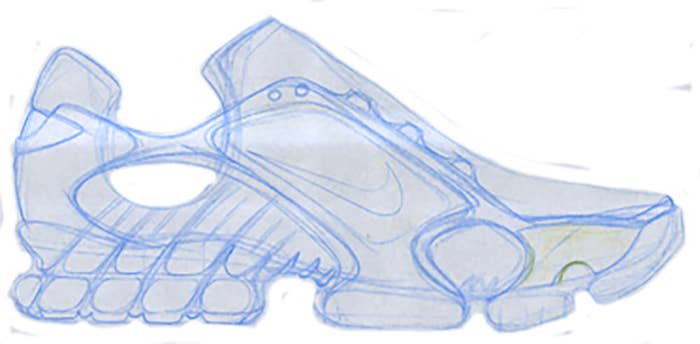
"People are so excited about it—don't take it the wrong way," Smith recalls Jones telling him. "People are really excited about that shoe, and what we want to do is make it more broad in its appeal." He wanted Smith to make the sneaker more global and less attuned to Japan, specifically. His only request was to put one little piece of rubber in the front of the shoe, bolstering it ever so slightly for a worldwide audience. Smith says that after he acquiesced, Nike showed the Spiridon to retailers at a sales meeting and booked in at 800,000 pairs on pre-order.
"It was the right thing to do," he says now. "It turned out to be the right design."
The shoe, originally labeled the Air Zoom Spiridon despite the first Spiridon releasing years before (Nike wasn't as keen on attaching numbers to sequels back then), arrived in 2003 at $100 for U.S. buyers. It used open-screen mesh on its upper for ventilation and a combination of Phylite and rubber on the outsole. Smith left the forefoot space relatively open, intending to allow the foot more flexibility there. The designer says that the goal of making it more palatable worldwide worked—when he sold his old pairs on eBay after taking a job at Adidas in 2010, most of them went to Brazil, where the techy runner became a favorite. In addition to being popular in Japan as anticipated, the 2003 Spiridon moved strong units in Italy, Spain, and South America.
Magdi Fernandes, who ran a sneaker shop in London called Slammin' Kicks and now moves all sorts of rare shoes via his new project Archive DNA, recalls seeing the Air Zoom Spiridon 2 on the feet of the staff at the NikeTown London location in 2003. Although it was mostly seen in his area as a performance runner, it did have some street appeal.
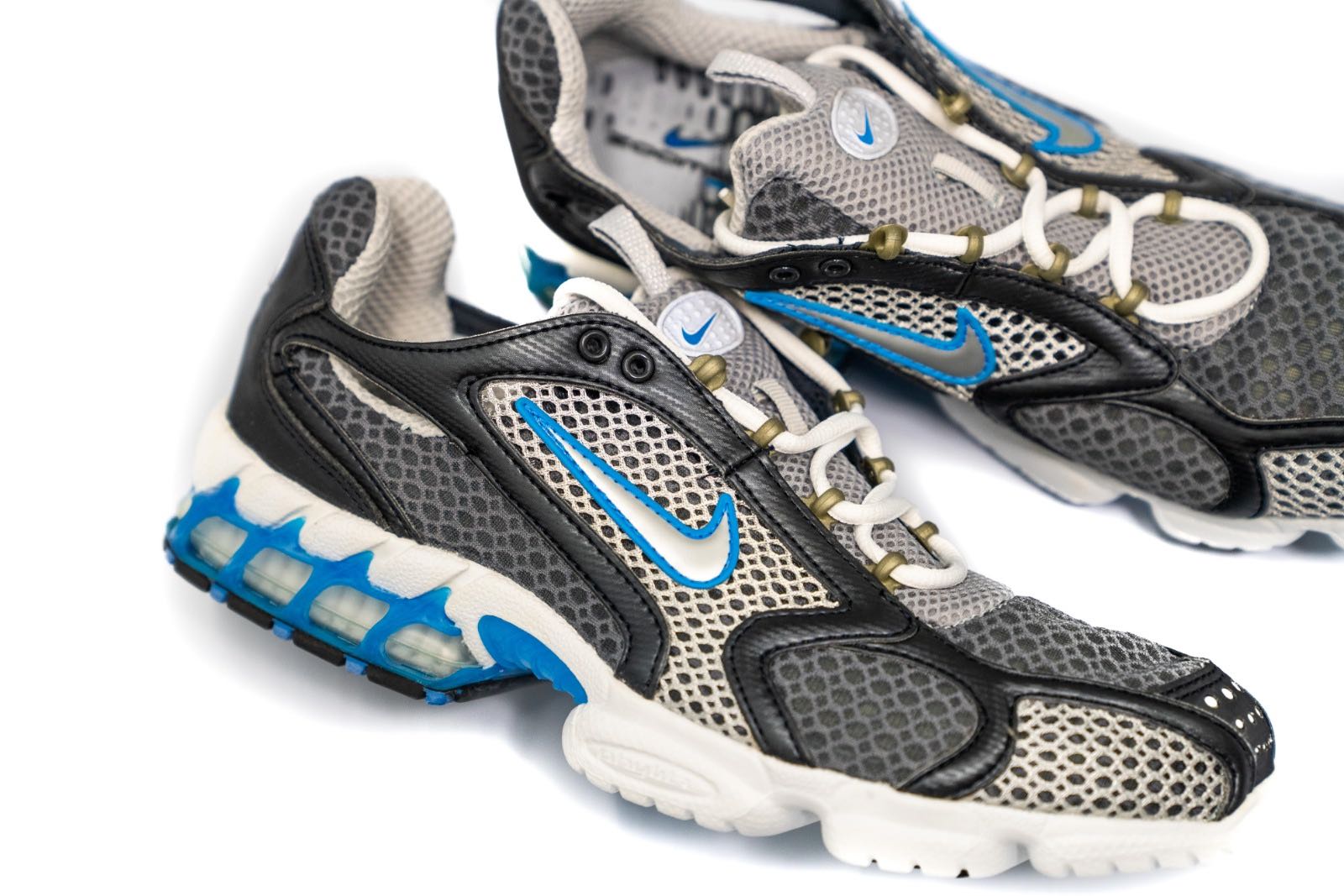
"It was completely overlooked, but I do remember a few roadman from my area were into it because it was almost like a new Air Max that nobody had seen before," says Fernandes, who's recently been selling original pairs of the shoe. "It was always about being different."
While the Air Zoom Spiridon Cage 2's name places it as a sequel to the original cult favorite Air Zoom Spiridon from 1997, it was partly inspired by the Zoom Citizen, Smith says. The Citizen, released in 1999, had exposed Zoom cushioning on the bottom, but it was too open and prone to collapse under compression. The updated Spiridon Cage 2, then, was a solution, featuring a Pebax "cage" around its visible Zoom bags on bottom that looked something like a telephone cord wrapped under the shoe.
The name is a point of contention for Fernandes, who takes issue with Nike reintroducing what was originally known as the Air Zoom Spiridon 2—the number implied and not part of the official name—as the Air Zoom Spiridon 2 Cage.
"The 'Cage' was a nickname it was given over time and was never called that by Nike," he says. "There are plenty of other shoes that feature the Zoom cage, but none of them have it in their name. It's not that serious, but it's more annoying, as it's on the box." Other than nomenclature complaints, Fernandes says Nike's reissue is a faithful recreation of the original.
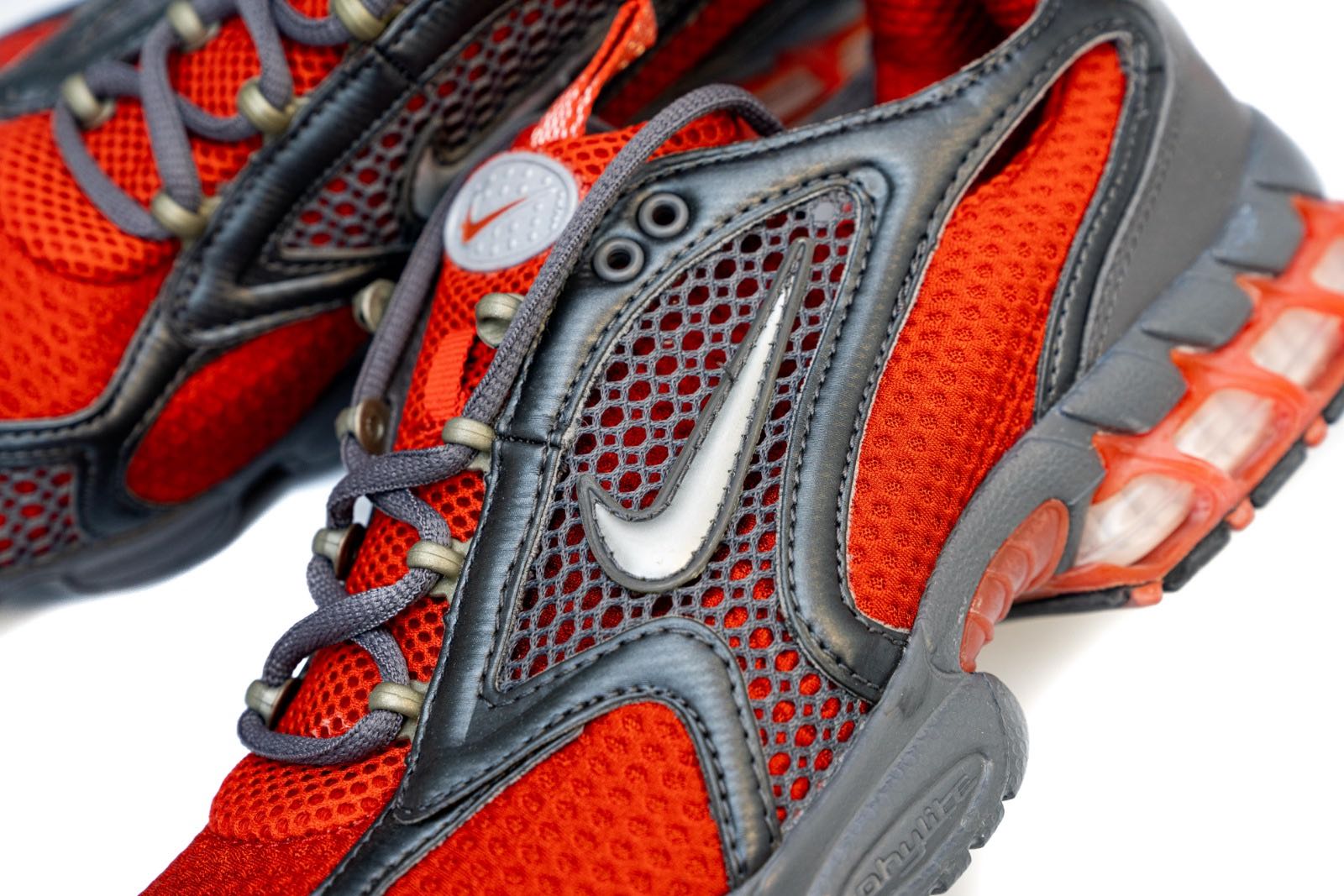
The retro treatment began on Friday with the release of two Stüssy collab colorways bearing the label's name on their toe, one in the shoe's original materials and one made over with a hemp-like paneling. It's familiar territory for Smith, whose fiery Zoom Streak Spectrum Plus design Nike brought back in 2018 as a Supreme special edition. The 2020 reissue of the shoe wasn't something the designer, who has plenty of connections to Nike but hasn't worked there for 10 years, was privy to ahead of time.
He approves of the Stüssy version, saying he'd wear the khaki-colored one, and appreciates seeing someone as colossally influential as Travis Scott wearing a shoe he designed almost 20 years ago. He wishes, though, the rollout included a bit more attribution. Nike's scant materials on the retro don't mention him; neither does Stüssy's press release. Both parties declined to comment for this story.

"I just wish they would give you credit for stuff," Smith says. Still, he tells Complex, he always hoped Nike would bring the shoe back and feels like the models he made years ago are more relevant than ever.
"I think his style of design with technical running shoes from the early-to-mid 2000s is currently in trend," Fernandes concurs. "You can't really go wrong with them right now."

